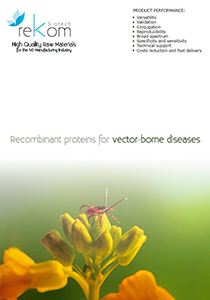Babesiosis (o piroplasmosis)
La babesiosis es una enfermedad transmitida por vectores, causada por parásitos del género Babesia, atacando a los glóbulos rojos, invadiendo los eritrocitos y destruyéndolos. Se trata de una enfermedad que afecta principalmente a los animales, aunque puede darse el caso de infección en humanos, dependiendo de la especie. La babesiosis se transmite a través de la picadura de la garrapata, aunque también puede ocurrir mediante transfusión sanguínea. Los síntomas más comunes son malestar general, fiebre, fatiga, escalofríos, anemia hemolítica, y dolores de cabeza, musculares o de articulaciones. En otros casos, sobre todo es pacientes inmunodeprimidos o ancianos, puede ser potencialmente mortal. No obstante, esta enfermedad puede ser también asintomática, y persistir varios meses o años. El tratamiento consiste en antiprotozoarios y antibióticos de amplio espectro, y como prevención se recomienda evitar zonas endémicas y usar repelentes de insectos. Puesto que los síntomas son muy parecidos a otras enfermedades, el diagnóstico es muy importante, pudiéndose hacer mediante frotis de sangre periférica con un microscopio, una prueba serológica o PCR.
Se han descrito más de 100 especies de Babesia diferentes, pero menos de 20 son de importancia médica y veterinaria. La Babesia canis y la Babesia gibsoni son protozoos de los eritocitos (piroplasma), transmitidos por garrapatas ixoide, y afectan fundamentalmente a perros. Es importante identificar la especie que está produciendo la enfermedad, puesto que el pronóstico y el tratamiento son distintos.
La babesiosis canina presenta una distribución a nivel mundial, aunque existe una mayor repercusión en zonas tropicales y subtropicales.
Enfermedad infecciosa animal (principalmente perros)
En Rekom Biotech, diseñamos y producimos reactivos IVD para el diagnóstico de Babesiosis (o piroplasmosis). Si no encuentras lo que buscas, puedes solicitar nuestro servicio de proteínas recombinantes/anticuerpos a la carta. ¡No dudes en contactar con nosotros!
Proteínas recombinantes
Cómo reconstituir viales liofilizados
Antígenos recombinantes para diagnóstico de Babeiosis




